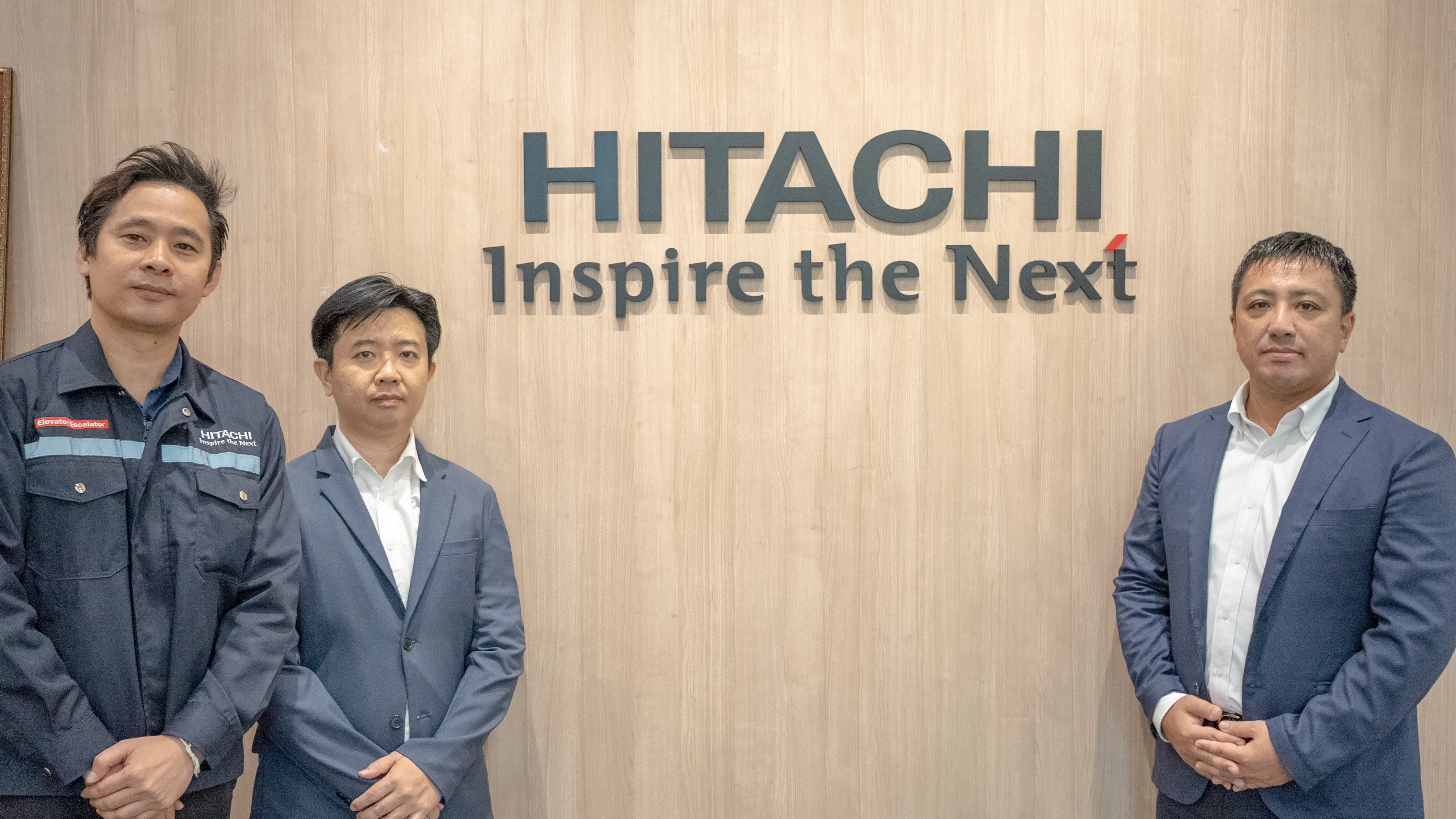Digitizing Power Transmission Inspection Reports: Cloud Management and Real-Time Sharing Enhance Response Speed
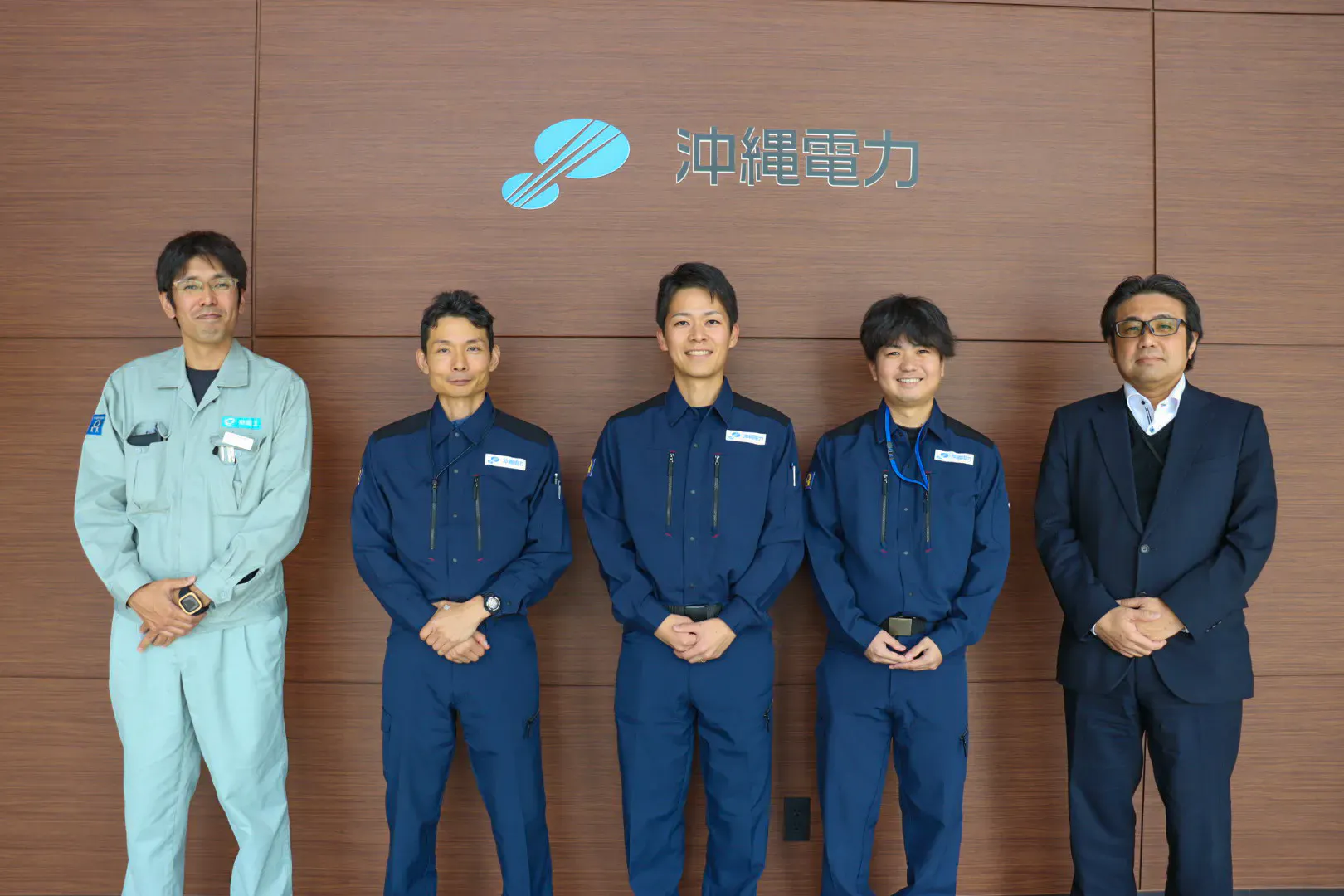

Company Name
Okinawa Electric Power Company, Inc.
Number of Employees
1536
Business Activities
Transmission Facilities Patrol Inspection & Construction
Utilization Services
As the only electric utility company in Okinawa Prefecture, Okinawa Electric Power Company, Inc. is responsible for building and maintaining the region’s power infrastructure. Despite being located in a region frequently struck by typhoons—nearly half of those approaching Japan pass through Okinawa—the company works tirelessly to ensure the stable supply of electricity that supports the daily lives of local residents.
Within its Transmission Department, Okinawa Electric has introduced KANNA and KANNA Report to streamline patrol inspections, equipment checks, and construction projects.
In addition to daily operations, the company must also respond swiftly to emergency situations during typhoons. What challenges led Okinawa Electric to adopt KANNA, and what benefits have they experienced since? We spoke with Masatomo Minei, Hiroki Hokama, Hiroto Yahata, and Takayuki Yamashiro of the Transmission Group at Okinawa Electric, as well as Yoshiaki Akamine of Okinawa Electric Construction (Denko) Co., Ltd., a key partner company that coordinates subcontractors in collaboration with Okinawa Electric.
Background and Effects of KANNA Implementation
課題
(1) Creating and submitting reports required extra work: Manual transcription and data transfers of reports caused delays even before both Okinawa Denko and Okinawa Electric could complete their reviews on them.
(2) Absence of a centralized communication tool: Resulting in delays even when sharing urgent information.
導入の決め手
The key factor in choosing KANNA was the centralized ability to complete everything from report creation to submission and review on mobile devices, while enabling real-time information sharing with partner companies.
効果・改善
(1) Centralized reporting with KANNA Report: The entire process—report creation, photo attachments, and cloud uploads—was consolidated on mobile devices, streamlining information sharing. This also enabled faster response to urgent cases.
(2) Smarter communication and progress reporting: Routine communication shifted to chat, while progress updates moved to the reporting function. Partner companies outside the group were able to be securely invited, allowing communication from anywhere. As a result, reporting accuracy and speed improved significantly.
(3) Dedicated project setup for typhoon response: A KANNA project specifically for typhoon-related incidents was created, consolidating field photos, videos, and traffic updates. This ensured a clear separation from other projects and allowed for fast information sharing.
Person interviewed

Okinawa Electric Power Company, Inc.
Transmission & Distribution Division – Power Distribution Department, Transmission Group
- Masatomo Minei (Group Manager, far right)
- Takayuki Yamashiro (Second from right)
- Hiroto Yahata (Chief, center)
- Hiroki Hokama (Chief, second from left)
Okinawa Denko Co., Ltd.
Power & Social Infrastructure Division – Transmission Maintenance Section
- Yoshiaki Akamine (Assistant Manager, far left)
Power Infrastructure in Okinawa — A Region of Many Remote Islands and Frequent Typhoons
— To begin, could you tell us about the business of Okinawa Electric Power Company?
Mr. Yamashiro: As the sole power provider in Okinawa Prefecture, our primary business is supplying electricity throughout the region. Okinawa is an island prefecture spanning a large area of the sea—approximately 1,000 km east to west and 400 km north to south—made up of numerous islands of varying sizes. We supply electricity to 38 inhabited islands, including the main island of Okinawa.
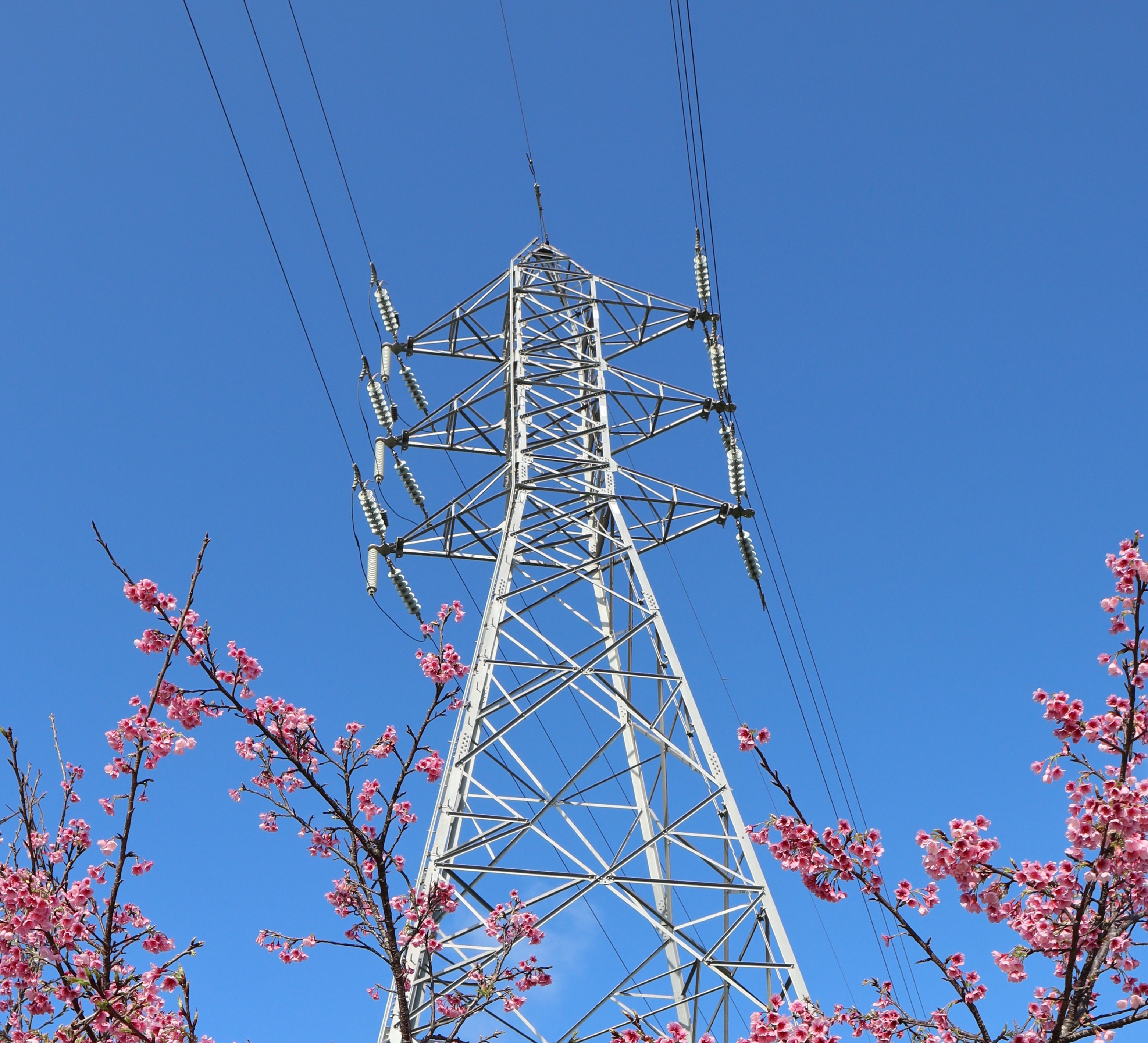
At the same time, protecting Okinawa’s beautiful natural environment is one of our key responsibilities alongside ensuring a stable power supply. Therefore, environmental issues are positioned as a top priority in our management strategy, and we are working to expand into comprehensive energy solutions.

Mr. Minei: Okinawa not only consists of many remote islands but is also located in a region frequently hit by typhoons. For this reason, ensuring a stable power supply and promoting renewable energy requires unique approaches that differ from other regions. One of our greatest strengths lie in our independent, small-scale grid, which allows our transmission and distribution divisions to work seamlessly with our generation and retail divisions during natural disasters.
In other regions of Japan, transmission/distribution and generation/retail are handled by separate companies. However, under Okinawa’s unique conditions—where frequent typhoons pose constant risks—stable power supply to all 38 inhabited islands demands even closer coordination. By maintaining a robust backup system, we ensure that the transmission/distribution and generation/retail divisions can act quickly and effectively in times of disaster.
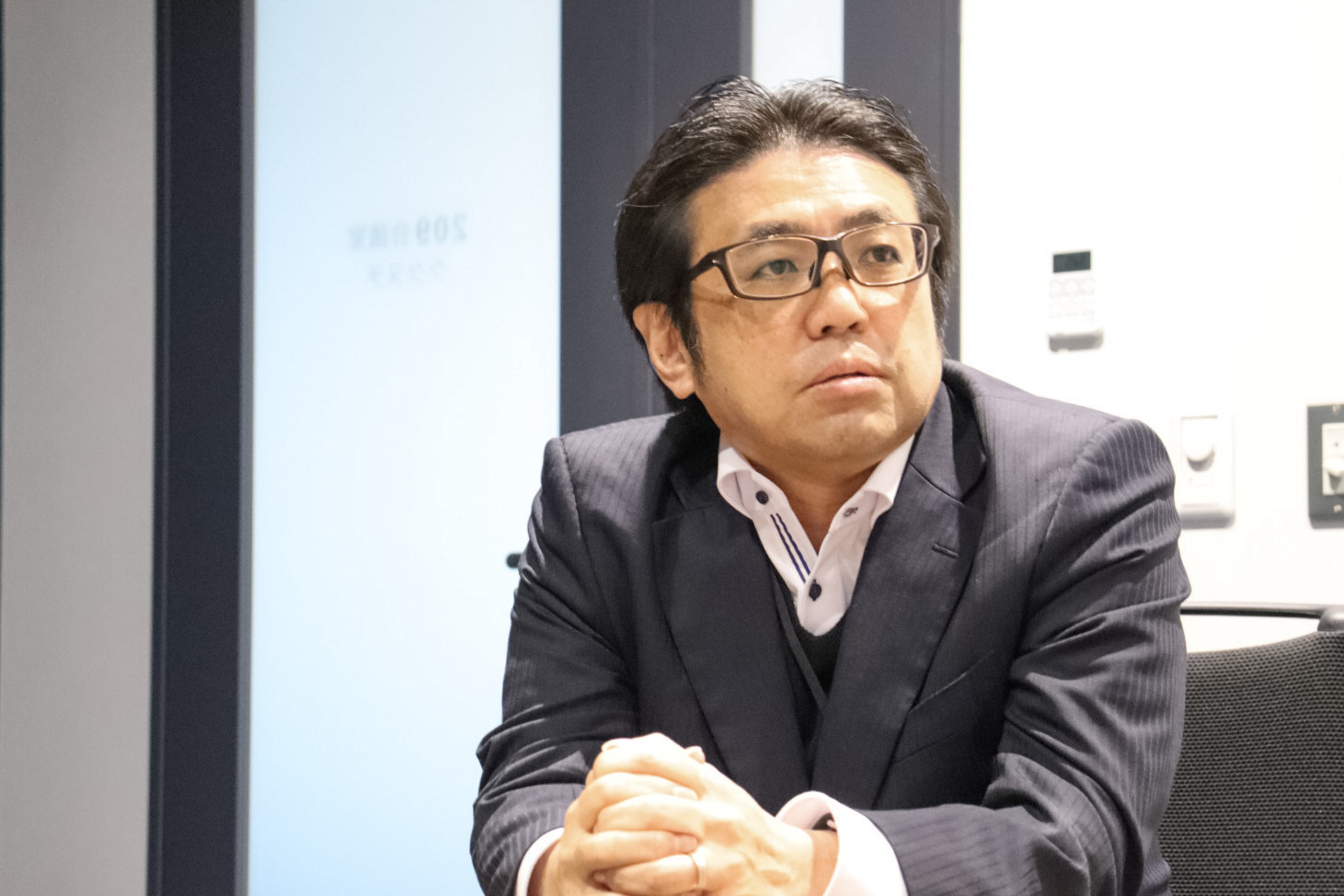
Mr. Hokama: Our business covers a wide range of operations, but the introduction of KANNA has been focused on the Transmission Department. Within the Transmission Department, which is responsible for the construction, maintenance, and repair of transmission facilities, we are leveraging KANNA to improve operational efficiency.

Eliminating Time Loss and Transcription Errors in Reporting
— You introduced KANNA for transmission facility maintenance and repair work. What challenges lead to this decision?
Mr. Yahata: Patrol inspections and checks of transmission facilities are essential to ensuring a stable power supply. For these operations, we rely on the support of multiple partner companies, with Okinawa Denko Co., Ltd.—a group company of Okinawa Electric—serving as the coordinator for the inspection and patrol work.
In practice, partner companies conduct patrols and inspections at each site, compile the results into reports, and submit them to Okinawa Denko staff. The Okinawa Denko team then reviews the reports received from workers at each site, consolidates them by transmission line, and finally submits them to us at Okinawa Electric.

We review the reports submitted by Okinawa Denko to determine the necessary response for each facility, and when repairs are required, we draw up construction plans. However, before the introduction of KANNA, inefficiencies occurred not only for the partner companies on-site, but also for Okinawa Denko as the coordinator, and for us at Okinawa Electric.
Mr. Yamashiro: The first challenge for our partner companies was the inefficiency of transcription work required to transfer notes from paper into digital format for submission. Because patrols and inspections take place outdoors, even if a laptop was available, it was not practical to use it in the field. Instead, staff took handwritten notes on paper for each checklist item, and used digital cameras to capture the photos needed for the reports.
Submitting these reports to Okinawa Denko meant that handwritten notes had to be re-entered into Excel or Word, and photos had to be transferred from SD cards to a computer. To complete these tasks, staff had to return to the office from the field, adding further delays. On top of that, the transcription process risked introducing errors. In short, the traditional workflow caused a double inefficiency: both time loss and transcription mistakes.
These delays on the partner company side inevitably impacted Okinawa Denko as well. They had to wait for report submissions, and when any unclear points appeared in the reports, their staff had to contact the field workers for clarification and corrections—another source of delays.
Mr. Yahata: When both partner companies and Okinawa Denko experienced these delays, it naturally took even longer before we, at Okinawa Electric, could review the reports ourselves. This meant that in urgent cases, there was a real risk of delayed response.
Furthermore, because Okinawa Denko consolidated reports before submitting them to us, we sometimes received large batches of reports all at once. Reviewing a large volume of documents in a single session increased the risk of overlooking critical details. For us, the challenge was not only to reduce time loss but also to establish a workflow that would prevent oversights. This became the key motivation and reason behind introducing KANNA.
With KANNA Report, the Entire Reporting Workflow Is Streamlined—from Creation to Submission and Review—Eliminating Delays from Travel
— You introduced KANNA not only to reduce the time lost in report creation, submission, and review, but also to prevent oversight in the checking process. What made you choose KANNA as the solution?
Mr. Minei: Ease of use and robust functionality were certainly factors, but the biggest deciding point was that an unlimited number of accounts can be issued to external companies free of charge. We work closely with our group company, Okinawa Denko, and the partner companies coordinated by them, who are all trusted firms.
That said, in cases where projects are put out for competitive bidding, we may need to work with companies other than Okinawa Denko. In such situations, additional accounts are required. With KANNA, knowing that external accounts can be added without limit and at no extra cost gives us peace of mind. It means we can onboard new partners without worrying about added expenses and still request that they leverage KANNA.
Mr. Yamashiro: In specific, the deciding feature for us was KANNA Report’s ability to create reports directly from smartphones or tablets. As mentioned earlier, partner companies previously had to write notes on paper in the field, take photos with digital cameras, and then return to their office to compile everything into a digital report. This workflow was highly inefficient.
With KANNA Report, that inefficiency disappears. Once work is completed, staff can simply enter data on their mobile device, capture and attach photos on the spot, and instantly generate a report all on one software. Even better, KANNA allows us to import the Excel templates we were already using, so workers can continue using familiar formats and input data intuitively without confusion. Because everything is handled digitally from the start, the need for transcription is eliminated, reducing both workload and the risk of errors.
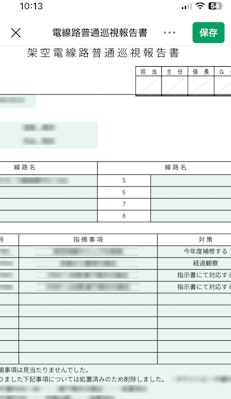
At the same time a report is completed, it is automatically uploaded to the cloud. This allows both Okinawa Denko and Okinawa Electric Power staff to view the document immediately, eliminating any delays. Because uploaded reports can now be checked as they come in, urgent issues can be identified and acted upon immediately. In other words, the functionality of KANNA Report directly solved the challenges we faced.
Reducing time loss, transcription errors, and communication gaps all at once
— After introducing KANNA, what kinds of results have you seen?
Mr. Yamashiro: With KANNA Report, we are experiencing the exact outcomes we had hoped for. For those working on-site, traditional paper notes have simply been replaced by a mobile device. By entering the required information into the form—just like writing notes—the report is automatically completed. Even sections that require photo attachments are easy to understand, as they are visually indicated with a camera icon, making the operation highly intuitive.
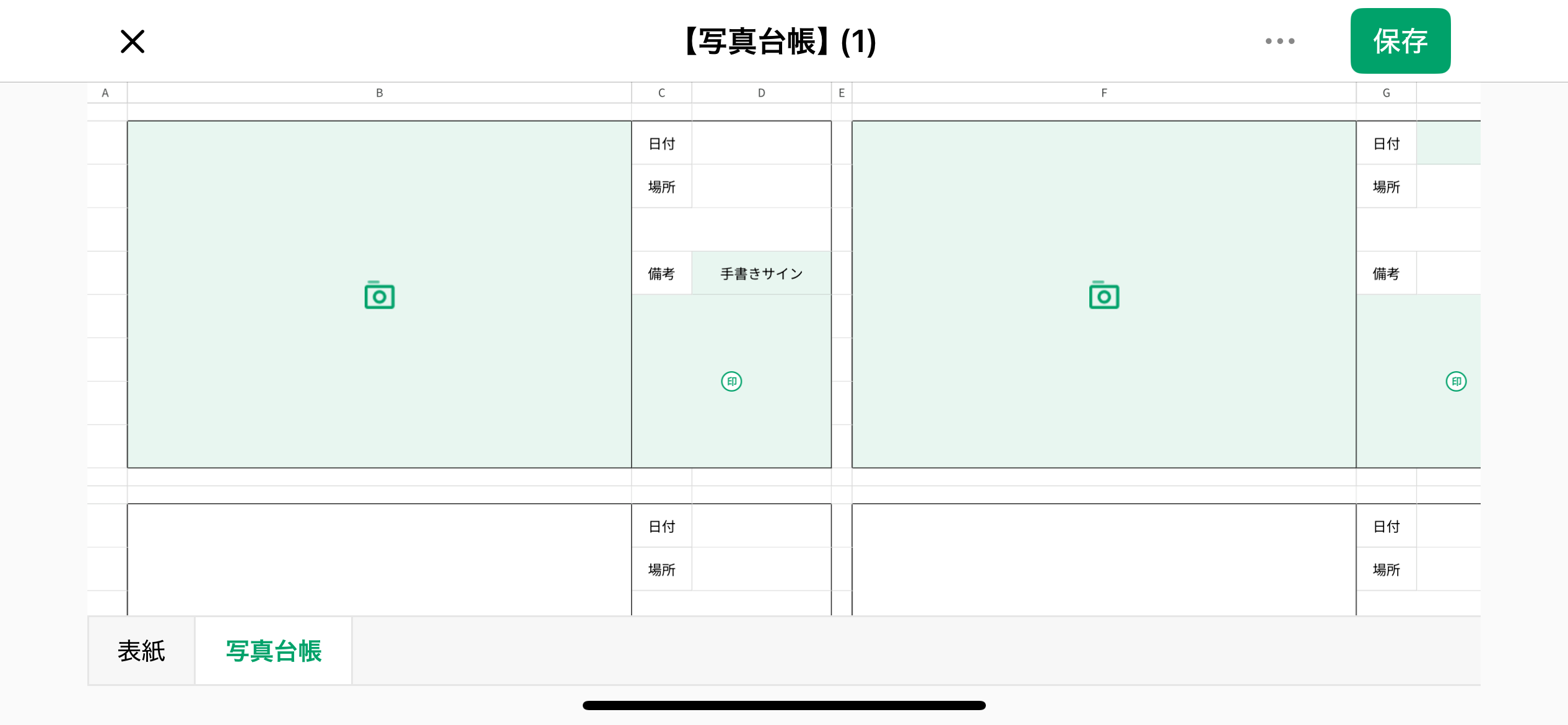
Once a report is completed, it is automatically uploaded to the cloud. Both Okinawa Electric Power and Okinawa Denko staff can access it in real time, and push notifications ensure that every new submission is seen without delay. This has significantly accelerated situational awareness in the field and eliminated the risk of overlooking critical updates. As a result, the latest inspection results can be reviewed in a timely manner, enabling us to plan future operations with far greater clarity.
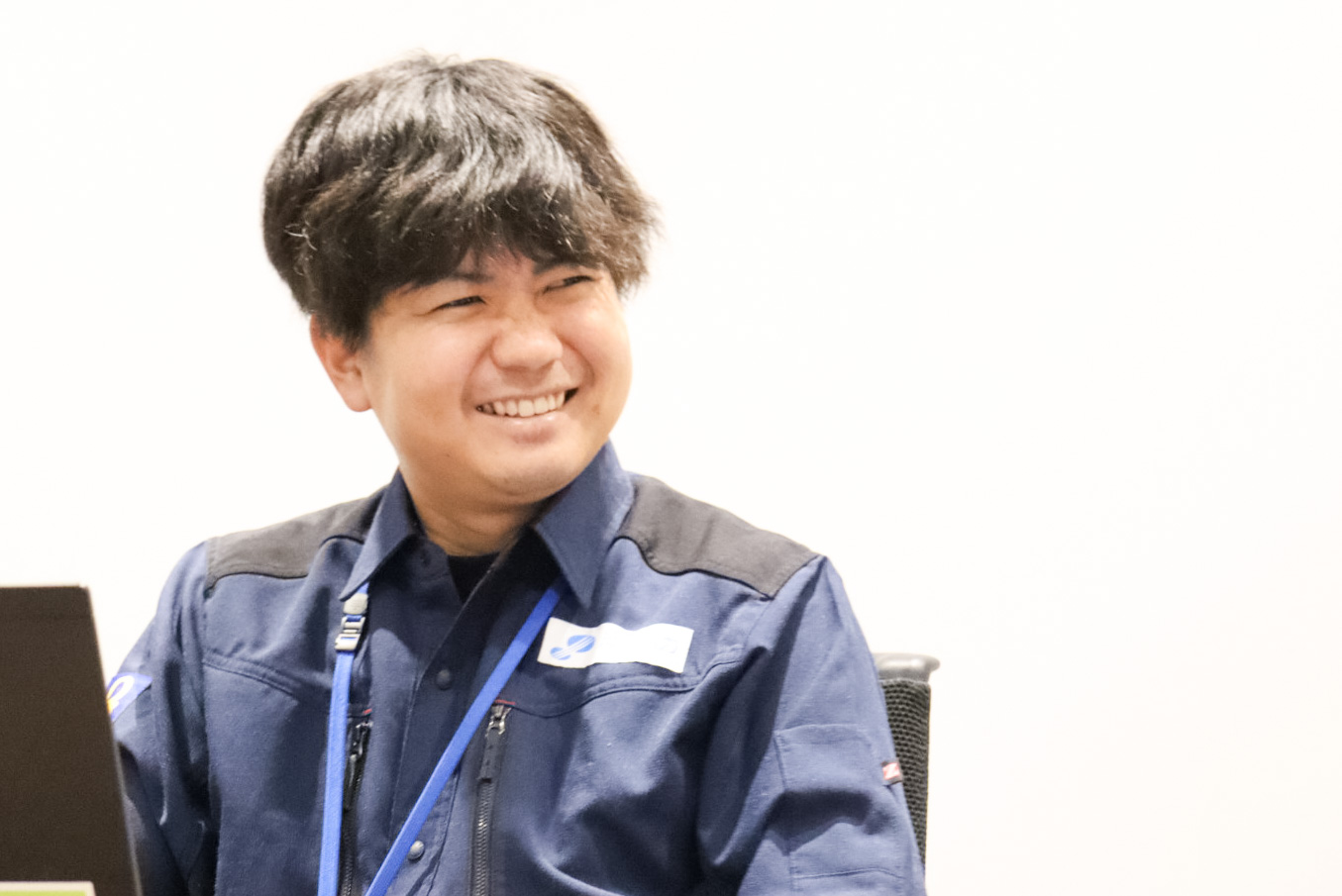
To help partner companies transition smoothly, we initially imported the same Excel format they had long been using. However, since KANNA Reports can be customized with no-code templates, we plan to gradually optimize the layout based on feedback from Okinawa Denko and our partner companies, making it easier to view and input data on smartphones. This will further streamline the creation and review of reports, boosting overall speed and efficiency.
Mr. Yahata: In addition to KANNA Reports, we also make good use of other KANNA features. Our Transmission Group’s responsibilities include construction projects, where daily progress tracking is essential. Before introducing KANNA, we asked partner companies to prepare documents showing the previous day’s work and the current day’s plan, then convert those into PDFs and email them to us before the start of each workday.
This process required a PC for both document preparation and file sending, creating extra work. Now, however, progress reports are handled directly in KANNA. After selecting the relevant project and opening the reporting function, they simply input the required details. Just like with KANNA Reports, the information is instantly uploaded to the cloud and push notifications are sent.
As a result, partner companies no longer need to open a PC, create PDFs, or attach files to emails—a significant reduction in workload. For us on the receiving end, the efficiency gains are just as great: no more checking email, opening attachments, and saving files. Instead, we can instantly open the project in KANNA, where daily progress reports are neatly displayed in chronological order—making them easy to review at any time.
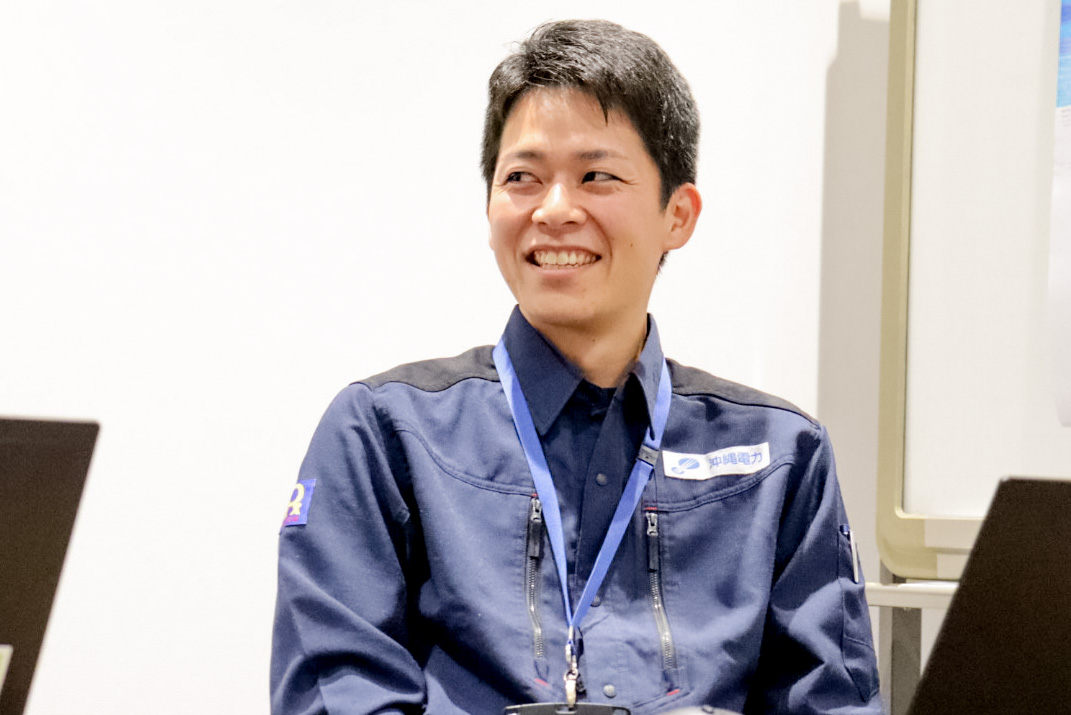
Mr. Hokama: The chat function in KANNA has also contributed greatly to improving our operational efficiency. Within Okinawa Electric Power, we have an internal portal system that allows us to communicate with colleagues and our group company, Okinawa Denko. However, due to security restrictions, this system cannot be accessed from offices outside our internal network—even if there is internet access—leaving us no choice but to rely heavily on phone calls.
Of course, phone calls are very useful for urgent communications, and some details are easier to convey in conversation. However, phone calls do not leave a record, and miscommunication can occur. With KANNA’s chat function, every new message triggers a push notification, ensuring the same immediacy as a phone call, while also leaving a written record that all stakeholders can access.
Today, our practice is to use chat as the primary means of information sharing, and when urgent matters arise, we still place a call but always follow up by posting the same information in the chat. This way, the content isn’t limited to the two people on the phone—all project members can view it, ensuring smoother information sharing. Because images can also be attached, communication is clearer, and we have effectively eliminated the risk of misunderstandings.

Mr. Yamashiro: One of the greatest advantages of KANNA is that all stakeholders can view the same information. This convenience also extends to the document sharing function. Okinawa has approximately 1,200 transmission towers, each of which must be inspected on a five-year cycle—resulting in more than 200 inspections every year. With such volume, organizing photos and documents for each site used to be a considerable burden.
Now, KANNA functions as a centralized platform for document sharing. Inspection materials, as well as before-and-after photos of each tower, are stored in project-specific folders within KANNA. This allows Okidenko staff to easily output the necessary documents and images when preparing reports.
For us at Okinawa Electric Power, before KANNA we had to contact Okidenko whenever we wanted to check the current condition of a tower. Today, we simply open the project folder in KANNA and review the materials ourselves. This eliminates the need to interrupt our partners, while enabling us to track progress directly.
Veteran workers adopt KANNA with ease, chat eliminates miscommunication
— As the company responsible for coordinating partner contractors, could you tell us how things have changed at Okinawa Denko (Okidenko) since adopting KANNA?
Mr. Akamine (Okidenko): Among our partner companies, some of the field workers are in their 60s and 70s. When we first announced the introduction of KANNA, there was naturally some resistance to changing long-standing practices. However, the chat function was quickly embraced by everyone. I believe this is because it operates much like familiar chat apps that most people already use in their daily lives.
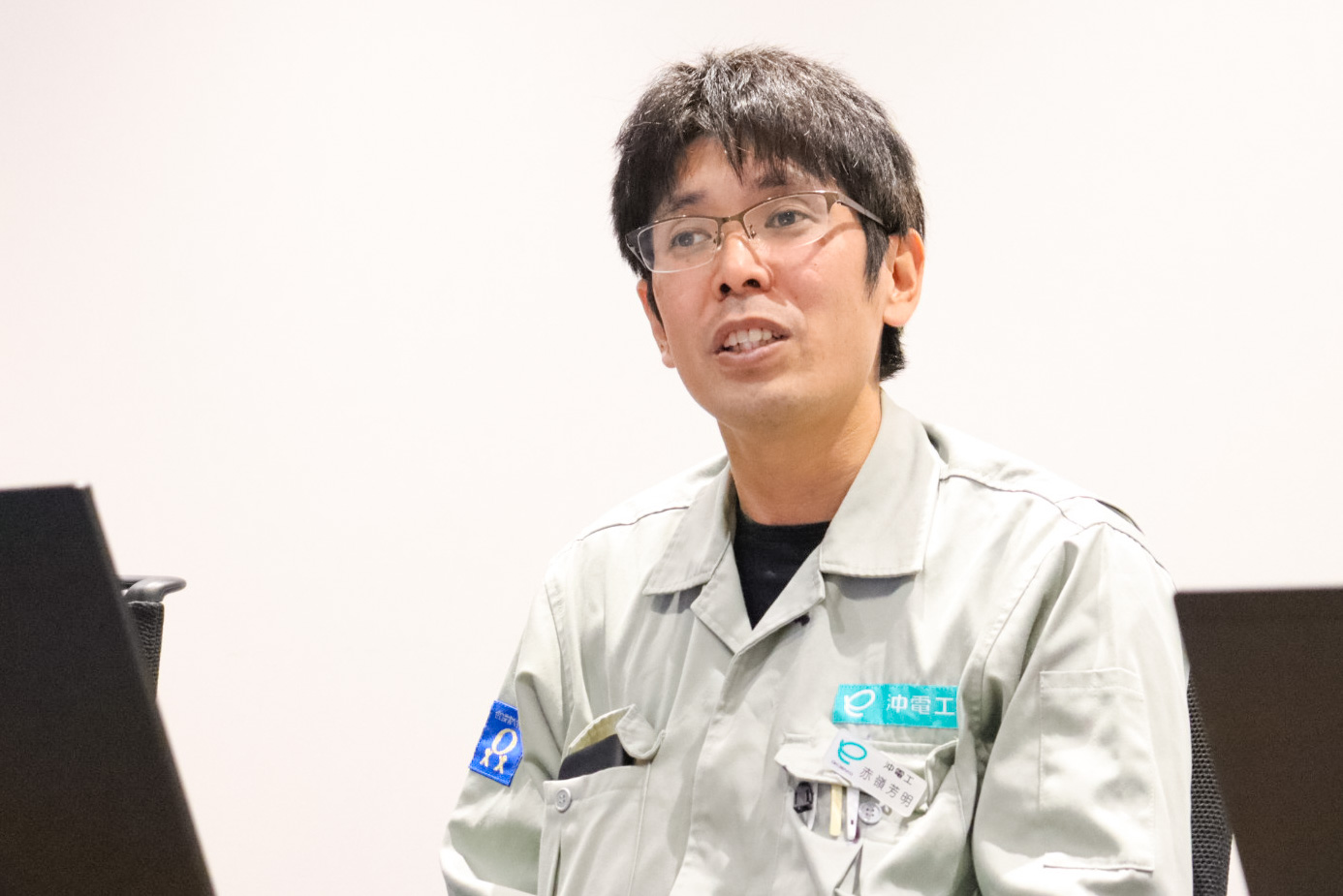
Thanks to our partner contractors actively using the chat function, it has greatly helped us at Okidenko. Since we serve as the link between Okinawa Electric Power and the contractors, whenever we receive an urgent message from them, we must quickly relay that information to Okinawa Electric Power.
Before introducing KANNA, communication followed the flow of contractor → Okidenko → Okinawa Electric Power, which inevitably created time loss. With KANNA’s chat function, however, all stakeholders can view the information immediately, eliminating the inefficiency of miscommunication.
Of course, our role of coordinating closely with both groups on how to respond to urgent issues has not changed but by shifting the flow of information through KANNA’s chat, the time required for information sharing has been reduced, and the overall speed of our response has improved.
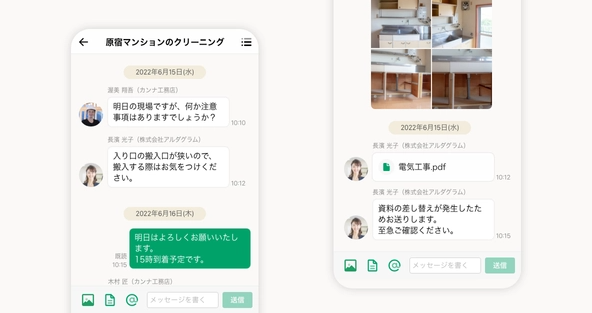
We’ve also received feedback from our partner companies saying, “It’s really convenient to be able to upload photos directly” . Previously, they had to take photos with a digital camera, bring them back to the office, and transfer them to a computer—a cumbersome process. Now everything can be done on a mobile device, from taking photos to sharing them. For us too, it’s a big improvement—we can check photos taken on-site in real time, which is extremely convenient.
On the other hand, when it comes to creating reports using KANNA Report, we are still in the process of encouraging wider adoption. Since existing Excel templates can be imported as-is, our partner companies have had no trouble adapting. However, some find it difficult to enter information on the smaller screens of mobile devices. Listening carefully to that feedback and communicating it back to Okinawa Electric Power is also part of our responsibility.

Stable Power Supply, On-Site Safety, and Disaster Response: Expanding KANNA’s Role
— Thank you. Finally, looking ahead, how do you see Okinawa Electric Power developing as you continue to adopt DX tools such as KANNA?
Mr. Minei: As Mr. Akamine from Okidenko mentioned, one of our priorities is encouraging wider adoption of KANNA Report among partner companies. Since we’ve introduced the system, there is no longer any need to stick to conventional, paper-based formats.
We intend to continue customizing report templates with greater flexibility—not only to make data entry easier, but also to ensure the information can be better utilized as digital data. At the same time, we are exploring ways to improve readability, including the possibility of providing tablets to partner companies.
We can only move forward with these considerations because the benefits of introducing KANNA are already clear. As usage continues to spread, partner companies, Okidenko, and we at Okinawa Electric Power will all see further reductions in the time spent on report preparation, submission, and review. Based on current estimates, KANNA will reduce back-office workloads per inspection route by approximately 95 minutes for partner companies, 140 minutes for Okidenko, and as much as 170 minutes for Okinawa Electric Power.

Beyond improving operational efficiency, we also see KANNA as an effective tool for disaster response. As I mentioned earlier, Okinawa is frequently hit by typhoons. Protecting the safety of our workers while ensuring a swift response requires thorough preparation and rapid information sharing. For example, when a large typhoon approached in 2024, we created a dedicated KANNA project specifically for typhoon-related information as part of our preparedness efforts.
Fortunately, the storm did not make a direct landfall. But in the event of a direct hit, we could expect not only widespread power outages but also downed trees blocking roads and disrupting transportation. By setting up a typhoon-specific project in KANNA and consolidating field photos, videos, and local traffic updates there, we can accelerate both information sharing and disaster response. Moreover, when the time comes to compile post-disaster reports, having that data already organized allows us to review the situation, in full, quickly and accurately.
Digital transformation is a company-wide challenge for us. If we can demonstrate best practices for using KANNA in both day-to-day operations and emergency response, we can expand its application beyond patrol inspections and construction management to other business areas as well. With this in mind, we will continue to actively promote the use of KANNA.
Article published on: September 19, 2025


